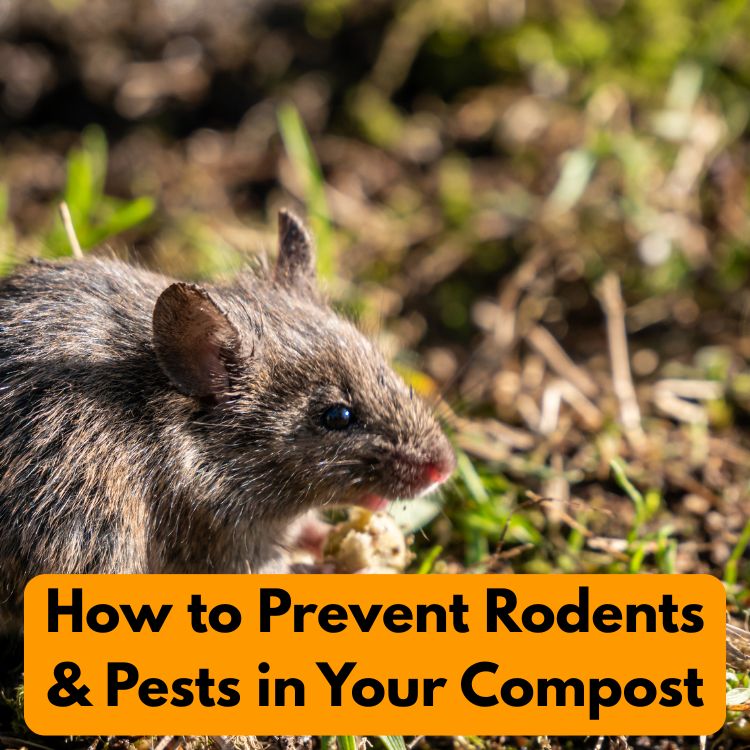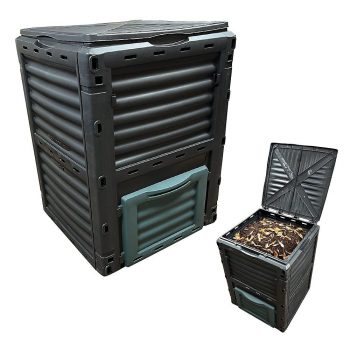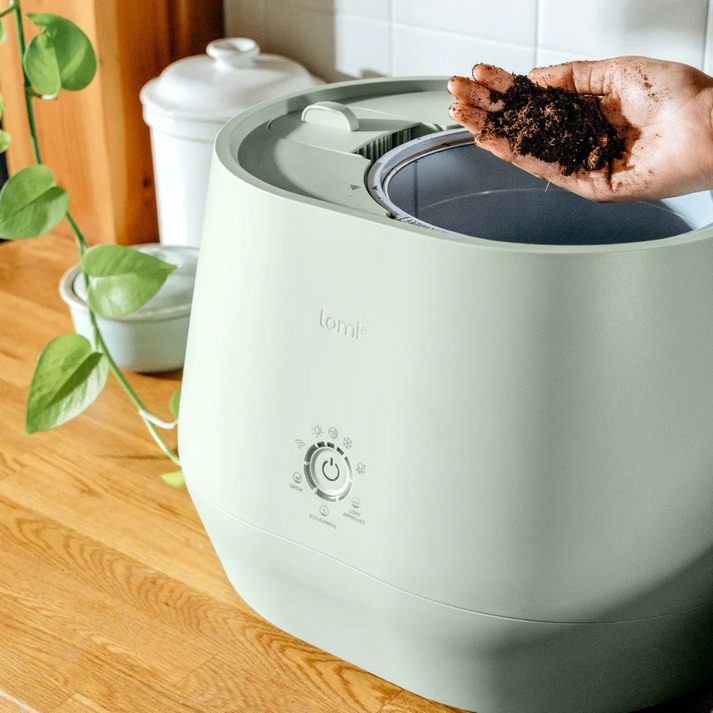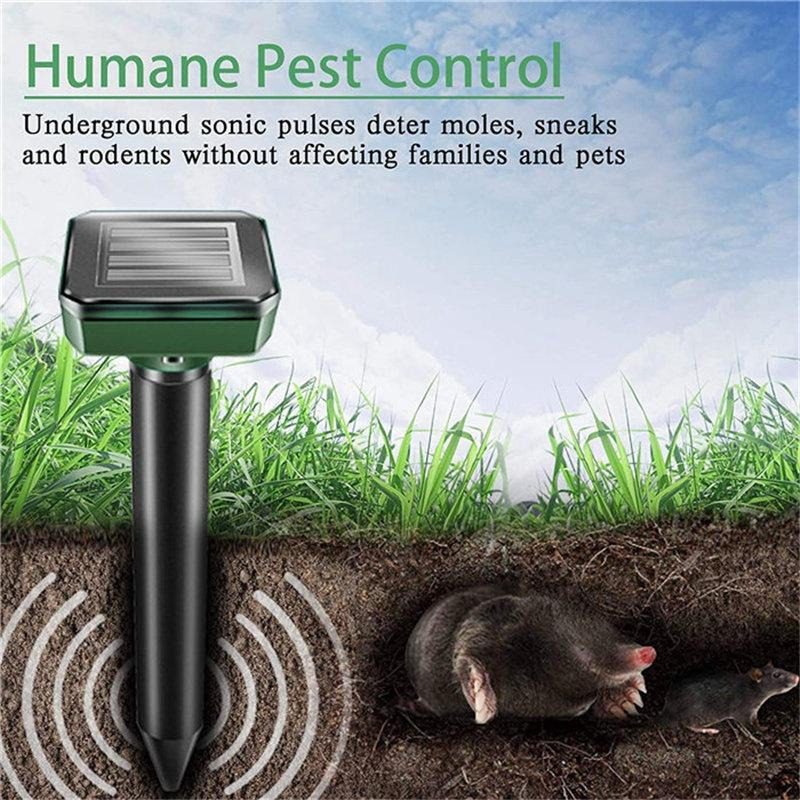It’s vitally important to know the answer to the question How do I keep rodents and pests out of my compost?
However you do it, it must be done. But fear not, by following some basic rules it can be achieved quite easily.
Composting is a smart way to cut down on waste and make soil full of nutrients for our gardens. But, it can draw in pests like rodents and pests.
These critters can harm our compost, spread diseases, and make a mess.
Keeping our compost pile pest-free is key for a thriving garden.
By using rodent prevention methods, we can lower the chance of pests and keep our compost valuable.
In this article, we’ll look at why composting is good, the issues with rodents and pests, and share tips on composting pest deterrents.
We’ll make sure our compost piles stay safe and healthy.
Key Takeaways
- Understanding the importance of maintaining a pest-free compost pile
- Identifying common rodents and pests that infest compost
- Learning effective rodent prevention methods
- Discovering composting pest deterrents to minimize infestation risks
- Implementing best practices for a healthy and productive compost
Understanding Why Pests Are Attracted to Compost
It’s important to know why pests are drawn to compost. Compost piles can attract pests if not managed right.
To keep composting eco-friendly, we must know what attracts pests and what doesn’t.
Common Attractants in Compost Piles
Pests like compost piles because of food scraps, especially meat, dairy, and oils. These attract pests and cause bad smells.
Balancing green and brown materials helps. Green stuff like food and grass clippings have lots of nitrogen.
Brown stuff, like leaves and straw, has lots of carbon.
The Ecological Role of Decomposers vs. Pests
Decomposers like bacteria and fungi break down organic matter. Pests, like rodents and flies, are drawn to food but don’t help break it down.
Knowing the difference is key to a healthy compost.
Distinguishing Between Beneficial and Problematic Organisms
Not all compost organisms are pests. Good bugs like earthworms and some beetles help break down materials. Identifying the beneficial organisms and supporting them is crucial.
This means keeping the compost moist and well-aired.
Identifying Common Compost Pests
Compost piles can attract pests if not managed right. These pests include rodents, insects, and wildlife.
Each type poses different risks to the compost and the environment.
Rodents (Mice, Rats, Voles)
Rodents are common pests in compost piles. They like the food scraps and warmth. Rodents can carry diseases and create messes, which is a big worry for gardeners.
Insects (Flies, Ants, Cockroaches)
Insects like flies, ants, and cockroaches are also pests. Flies are drawn to the smell of decomposing food.
Ants and cockroaches like the food scraps. These insects can spread disease and be a nuisance.
Other Unwanted Visitors (Raccoons, Opossums, Skunks)
Raccoons, opossums, and skunks might visit compost piles with food waste. These animals can disturb the compost and carry diseases.
Signs of Their Presence
Look for signs like rodents or insects, disturbed piles, and droppings or nests. Spotting these early helps in preventing pests.
Potential Risks to Your Compost
Pests can make the compost sick, smell bad, and damage bins or areas around. Effective pest management is crucial to maintaining a healthy composting process.
As the saying goes, “Prevention is better than cure.”
“A well-managed compost pile is less likely to attract pests.”
Knowing the common pests and preventing them helps keep composting healthy and productive.
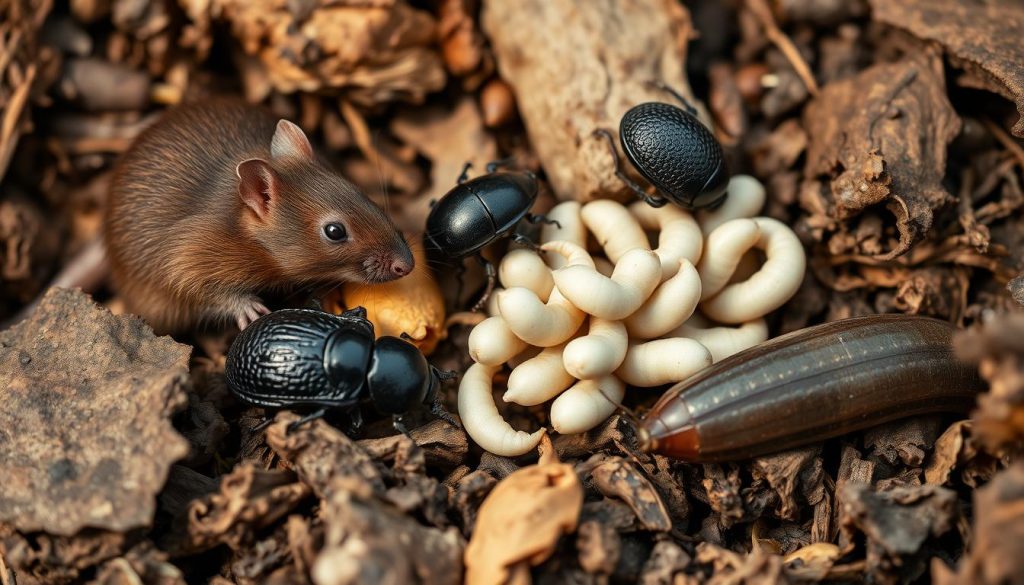
The Basics of Pest-Resistant Composting
Pest-resistant composting is easy to do with a few simple steps. We can keep pests away from our compost by focusing on a few key areas.
Proper Compost Pile Location
The spot where we place our compost pile is very important. It should be well-ventilated and not too close to our homes or neighbors.
A shaded area is best to keep it cool and moist.
Balancing Green and Brown Materials
Having the right mix of materials is key. We need to mix “green” materials like food scraps with “brown” materials like dried leaves.
Aim for 2/3 brown and 1/3 green materials.
| Material Type | Examples | Carbon/Nitrogen Ratio |
|---|---|---|
| Green Materials | Food scraps, grass clippings, manure | High Nitrogen |
| Brown Materials | Dried leaves, straw, shredded newspaper | High Carbon |
Maintaining Optimal Moisture Levels
Keeping the compost pile moist is crucial. It should be like a damp sponge to help microbes work well. Too much moisture can attract pests.
Achieving Hot Composting Temperatures
Hot composting involves turning the pile often to reach high temperatures. This kills weed seeds and pests.
By following these steps, we can make our compost less appealing to pests and support healthy decomposition.
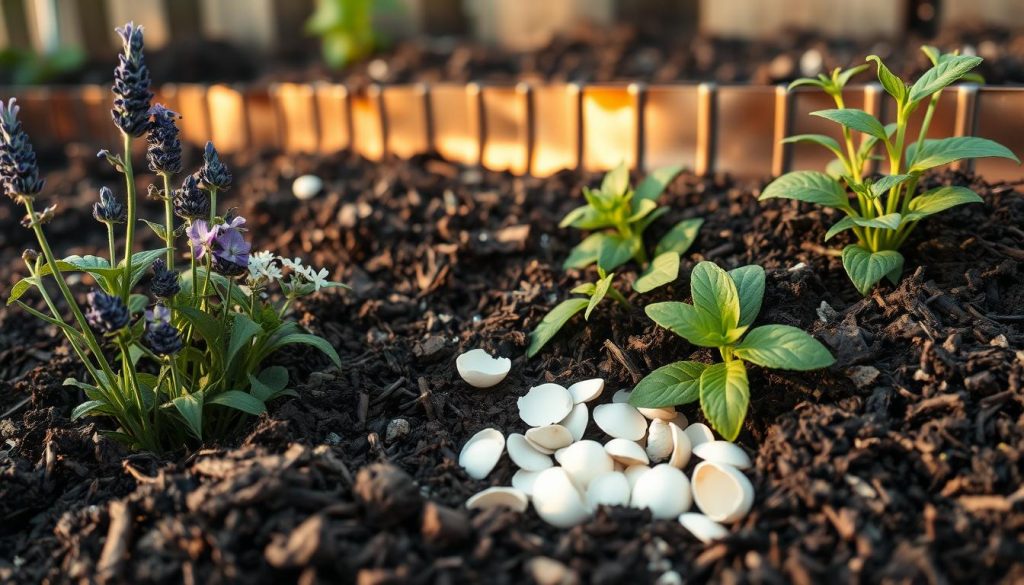
How Do I Keep Rodents and Pests Out of My Compost?
Keeping rodents and pests out of your compost is easy with a few simple steps.
We’ll show you how to keep your compost pile healthy and pest-free.
Creating Physical Barriers
One effective way to keep pests out is by using physical barriers.
You can use certain materials and designs for your compost bin.
Hardware Cloth and Wire Mesh Options
Hardware cloth or wire mesh around your bin can keep rodents out. Make sure the mesh size is small enough to block rodents. A mesh size of 1/4 inch or smaller works best.
Secure Lids and Bases
A secure lid and base are key. A tight-fitting lid with clips or weights keeps pests out. A solid base also stops rodents from burrowing underneath.
Regular Turning and Maintenance
Turning your compost regularly helps with decomposition and pest control. It lets you spot and stop pests early.
Managing Food Scraps Properly
Food scraps attract pests. Properly managing these scraps can help keep pests away.
Burying Techniques
Burying food scraps under brown materials reduces odors and pest attraction. Bury them at least 8-10 inches deep.
Pre-Composting Methods
Some use bokashi fermentation to break down food scraps before composting. This makes the compost less appealing to pests.
By following these tips, you can greatly reduce pests in your compost.
It’s about creating a pest-free environment while keeping your compost healthy.
Choosing the Right Compost Bin Design
The type of compost bin you choose is key to keeping pests away. A good bin design keeps your compost clean and efficient.
It also makes sure your composting is eco-friendly and pest-free.
Enclosed Bin Systems
Enclosed bin systems are a top pick for composting. They create a safe space that pests find hard to get into.
These bins are made of strong materials like plastic or metal. They have tight lids to keep out rodents and other pests.
Tumbler Composters
Tumbler composters are great for controlling pests. They’re made to be turned often. This action helps mix the compost well and speeds up decomposition.
It makes the compost less appealing to pests.
DIY Rodent-Proof Bin Options
If you’re on a tight budget or enjoy DIY projects, there are options for you. You can make a compost bin using materials like hardware cloth or metal mesh.
This way, you get a bin that’s both effective and secure.
In-Ground Digesters
In-ground digesters are a natural way to compost. By burying your compost, you make it less appealing to pests.
Installation Tips
- Choose a location with good drainage.
- Avoid areas with poor aeration.
Maintenance Requirements
- Regularly check moisture levels.
- Turn the compost periodically.
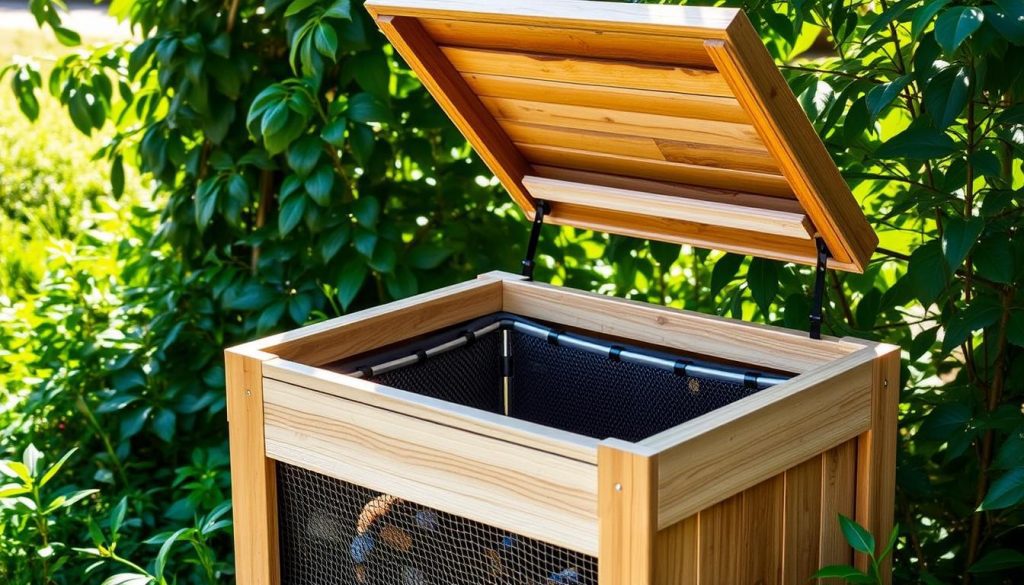
By picking the right compost bin and following installation and maintenance tips, you can lower pest risks.
This approach not only keeps your compost rodent-free. It also supports eco-friendly pest prevention in composting.
What NOT to Add to Your Compost
Not everything is good for composting. Some items can attract pests or harm the environment. It’s key to know what to leave out.
Foods That Attract Pests
Some food scraps draw pests to your compost. It’s important to skip these to keep pests away.
Meat and Dairy Products
Meat and dairy attract pests like rodents and flies. They also cause bad smells.
Oily and Fatty Foods
Oily foods attract pests and slow down composting. They create conditions without air.
Materials That Slow Decomposition
Some items slow down composting. This makes your compost less useful.
| Material | Reason to Avoid |
|---|---|
| Weeds with seeds | Can propagate in compost |
| Diseased plants | May spread disease |
| Chemically treated materials | Can kill beneficial microbes |
Harmful Additions to Avoid
Some materials harm the compost or plants that use it.
Avoid adding pet waste, as it can have harmful pathogens. Also, coal or charcoal ash has heavy metals bad for plants.
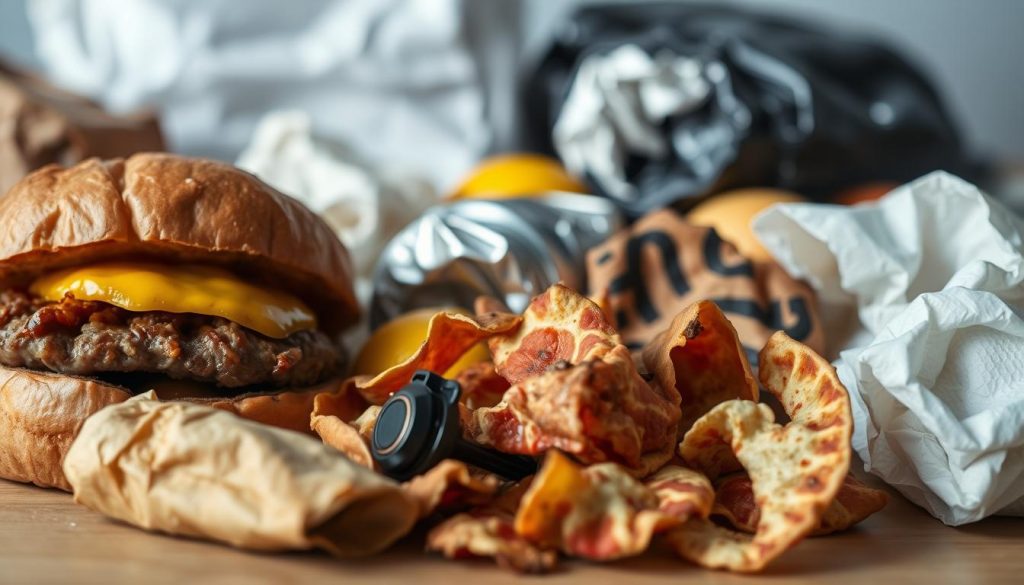
By carefully choosing what goes into our compost, we make a soil amendment. It supports plant growth and keeps pests away.
Natural Deterrents for Compost Pests
Compost pests can be a big problem. But, there are natural ways to fight them.
These methods are safe for the environment and keep our compost healthy for our gardens.
Plant-Based Repellents
Some plants can keep pests away from compost. We can put these plants around the compost or mix them into it.
Mint and lavender have strong smells that pests don’t like.
Mint keeps rodents and insects away. Lavender not only repels pests but also smells nice.
Other plants that work well include:
- Garlic
- Chives
- Marigold
Essential Oils and Natural Sprays
Essential oils can make natural sprays to keep pests away. Peppermint and lemongrass oils are good at keeping insects off.
| Essential Oil | Pest Repelled |
|---|---|
| Peppermint Oil | Ants, Flies |
| Lemongrass Oil | Mosquitoes, Flies |
Beneficial Insects and Organisms
Having good insects and organisms in our compost helps control pests. For example, beneficial nematodes kill pest larvae.
“The use of beneficial insects is a cornerstone of integrated pest management, offering a sustainable alternative to chemical pesticides.”
Physical Deterrents and Barriers
Physical barriers can also keep pests out. Using bins that rodents can’t get into or covering the compost with hardware cloth works well.
By using these natural methods, we can keep our compost healthy and pest-free. This helps our garden and the environment.
Indoor and Apartment Composting Solutions
Composting indoors is not only possible but also highly beneficial for urban residents. With the right techniques and equipment, we can efficiently manage our organic waste.
This creates a nutrient-rich soil amendment for our plants.
Several indoor composting methods are available, each with its unique advantages. Let’s explore some of the most effective systems.
Bokashi Fermentation Systems
Bokashi fermentation is a popular method for indoor composting. It involves fermenting organic waste in a sealed container using microorganisms.
This process is odor-controlled and can handle a wide variety of food waste, including meat and dairy products.
Vermicomposting (Worm Bins)
Vermicomposting, or worm composting, is another effective indoor composting method. It utilizes red wiggler worms to break down food scraps into a rich compost.
Worm bins are compact and can be maintained indoors with proper care.
Electric Composters
Electric composters are modern devices designed to compost food waste quickly and efficiently. They are ideal for indoor use, as they are typically compact and odor-controlled.
Odor and Pest Management for Indoor Systems
Managing odors and pests is crucial for successful indoor composting. Regular maintenance, proper balancing of green and brown materials, and using pest-deterrent methods can help mitigate these issues.
By adopting these indoor composting solutions, we can reduce our waste output.
We create a valuable resource for our gardens, all while minimizing the risk of pests and odors.
Troubleshooting Existing Pest Problems
If pests show up in your compost, don’t worry. We have advice to help you deal with it. Pests can still appear even when you try to keep your compost balanced.
Signs of Infestation
First, spot the signs of pests. Look for visible pests like rodents or insects in your compost. Also, watch for unusual odors, more pest activity nearby, and disturbances in your compost pile.
Humane Removal Methods
When you find pests, handle them gently. Look for non-toxic ways to keep pests away without harming your compost’s good bugs.
Traps and Deterrents
Traps and deterrents can help manage pests. Use humane traps for bigger pests. For insects, try natural deterrents like essential oils or plant-based repellents.
Humane is always best and the way I have found that works is deterring rodents and other critters by using this method.
You want to be actively making sure that these little guys don’t want to come into your garden in the first place.
Check out products like the This Solar Animal Repeller has an advanced built-in PIR motion sensor
When to Call Professionals
If pests keep coming back, you might need a pro. If you can’t get rid of them, talk to a pest control expert.
They use safe and green methods.
Rehabilitating an Infested Pile
After getting rid of pests, fix your compost pile. This stops pests from coming back.
Restart vs. Remediation Strategies
You can either start over or fix the pile you have. Restarting means throwing out the bad stuff and starting again.
Remediation means fixing the pile by turning it and balancing it to get rid of pests.
By using these steps and gentle methods, you can fix pest problems in your compost. This keeps your composting process healthy and productive.
Seasonal Considerations for Pest Control
Composting is a year-round activity. Knowing seasonal changes helps manage pests. As seasons change, so do pest challenges in compost piles.
Winter Composting Strategies
In winter, composting slows down due to cold. Insulating our compost piles or bins helps. This keeps decomposition going, even slower.
This method also keeps pests away. Pests are less active in cold weather.
Summer Heat Management
Summer’s heat speeds up composting but attracts pests. We keep our compost piles aerated and moist. Regularly turning the compost keeps it healthy and pest-free.
Spring and Fall Adjustments
Spring and fall have moderate temperatures, speeding up composting. It’s key to balance green and brown materials. Regularly turning the compost keeps it healthy and pest-free.
Regional Adaptations for Different Climates
Different climates need different composting and pest control. In hot climates, we must prevent overheating and pests. In cold climates, insulation and protection from extreme cold are vital.
Understanding our local climate helps us adjust composting. This ensures effective natural pest control for compost.
Adapting to seasons and local climate is crucial. It helps manage pests and keeps composting healthy.
Conclusion
We can keep our compost pile free from pests by using the right strategies. It’s important to use effective pest deterrents. This helps keep our compost healthy.
To compost successfully, we need to mix green and brown materials well. We should also keep the compost moist and hot.
Regularly turning the compost and using the right bin design helps too.
By following these tips, we can make our composting process better. This way, we can help our gardens grow and reduce waste.
Let’s make our composting a success and enjoy a healthy, pest-free pile.

